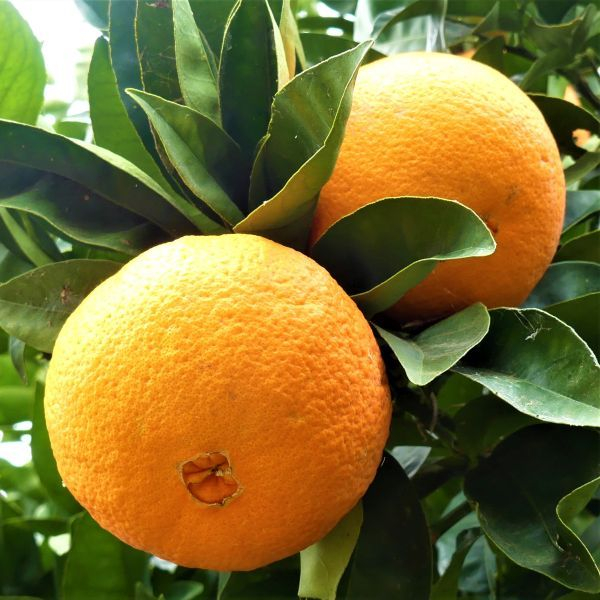Navel Orange
Navel oranges, botanically classified as Citrus sinensis, are a winter variety that grows on evergreen trees reaching over six meters in height and belongs to the Rutaceae or citrus family. The Navel orange comes in more than fifty different varieties and is one of the most well-known citrus fruits in the world. It is also known as the Washington Navel, Riverside Navel, and Bahia Navel. Due to the lack of seeds in navel oranges, grafting is the only method of growth, making all navel orange trees genetic clones of the original tree found in Brazil in 1820. Navel oranges are distinguished by their tiny holes, or "navels", that resemble belly buttons at the bloom stem end. A secondary orange sprouts inside the larger fruit due to a genetic abnormality, which results in these tiny holes. Navel oranges are predominately favored for fresh eating and are also used by chefs and home cooks for zesting, flavoring sauces, and garnish.
Oranges with a "navel" or distinctive circular hole on the flower stem end are medium to big in size, measuring 6 to 10 centimeters in diameter on average, and globular to slightly oval in shape. Due to the numerous oil glands scattered across the surface, the medium-thick rind matures from green to bright orange and is smooth with a pebbled feel. The white pith, which lies beneath the rind's outer layer and adheres to the flesh, is soft and easily peelable. The flesh is a pale yellow-orange color and is separated into 10 to 12 segments by thin membranes. It is delicious, soft, and seedless. Navel oranges have a balanced blend of sweet, tangy, and tart flavors because they are aromatic, sweet, and moderate in acidity.












